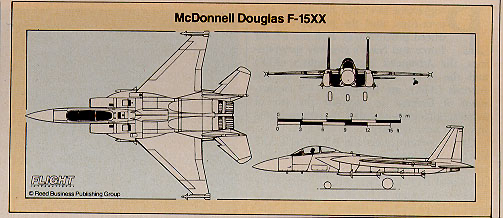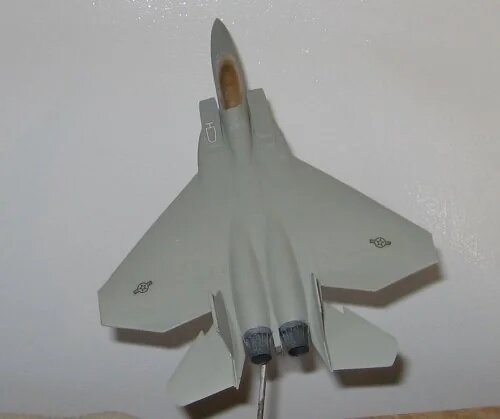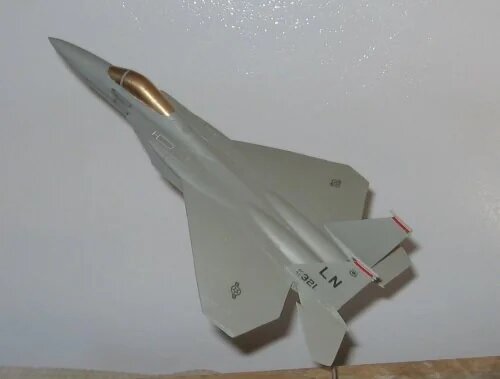New wings for the Eagle
The possible order for up to 80 fighter-bombers from the United Arab Emirates has attracted numerous manufacturers, some of whom offer improved versions of their aircraft.
McDonnell Douglas is currently offering an updated version of the F-15 Eagle especially for the United Arab Emirates. It will have enlarged wings with a profile twice as thick. This increases fuel capacity by 2.5 tonnes, which translates into an increase in range of around 30 per cent. The radius of action is now said to be about 1650 km, which is comfortably above the UAE's requirement of 1200 km. Due to the thicker wing, the top speed is reduced from Mach 2.5 to 1.8, and the transonic acceleration is no longer as good, but according to the manufacturer, this does not have such a serious effect on fighter-bomber use. Since the structure is much stiffer than before, heavier loads can also be attached to the outer suspensions. In addition, the radar reflection area is likely to be smaller. And the wing designed by the "Phantom Works" has another advantage: Since the attachment points are identical to the current version, it could even be retrofitted to existing Eagles. According to McDonnell Douglas, the new F-15U could be developed in thirty months. Whether the new model will ever get beyond the model stage, however, is by no means certain. Other manufacturers are also keenly interested in the potentially very lucrative business with the United Arab Emirates, which includes up to 80 machines. The Sukhoi Su-27 and Su-30 are reportedly on offer, as well as Dassault's Rafale and used Panavia Tornado. On the American side, Lockheed is also entering the race with a new version of the Fighting Falcon. The F-16U will also receive new delta wings, like the F-16XL test vehicle from the 1980s. For this purpose, the fuselage is extended, and the two-seater cockpit is used. The result of the changes: 80 percent more internal fuel capacity and more suspension points for the armament. Navigation and target sensors are no longer to be carried in containers but mounted in the fuselage. Both US offers require the approval of the Pentagon, and the development costs would have to be borne by the UAE. Washington does not seem averse to this possibility, because after all, the resulting performance-enhanced fighter jets could possibly also be needed for their own needs if there are financial problems with new developments such as the F-22. Independently of the F-15U, McDonnell Douglas is currently making great efforts to convince the US Air Force to buy more F-15E. According to the company, the fleet of long-range fighter-bombers is already too small, and the problem will be exacerbated by the foreseeable retirement of 70 F-111. Since the production of 93 aircraft for Israel and Saudi Arabia is currently underway, according to McDonnell Douglas, new Eagles for the Air Force could be integrated into production quite cheaply from the end of 1997.
Karl Schwarz
Source: Flug-Revue, 1994-12, page 71





